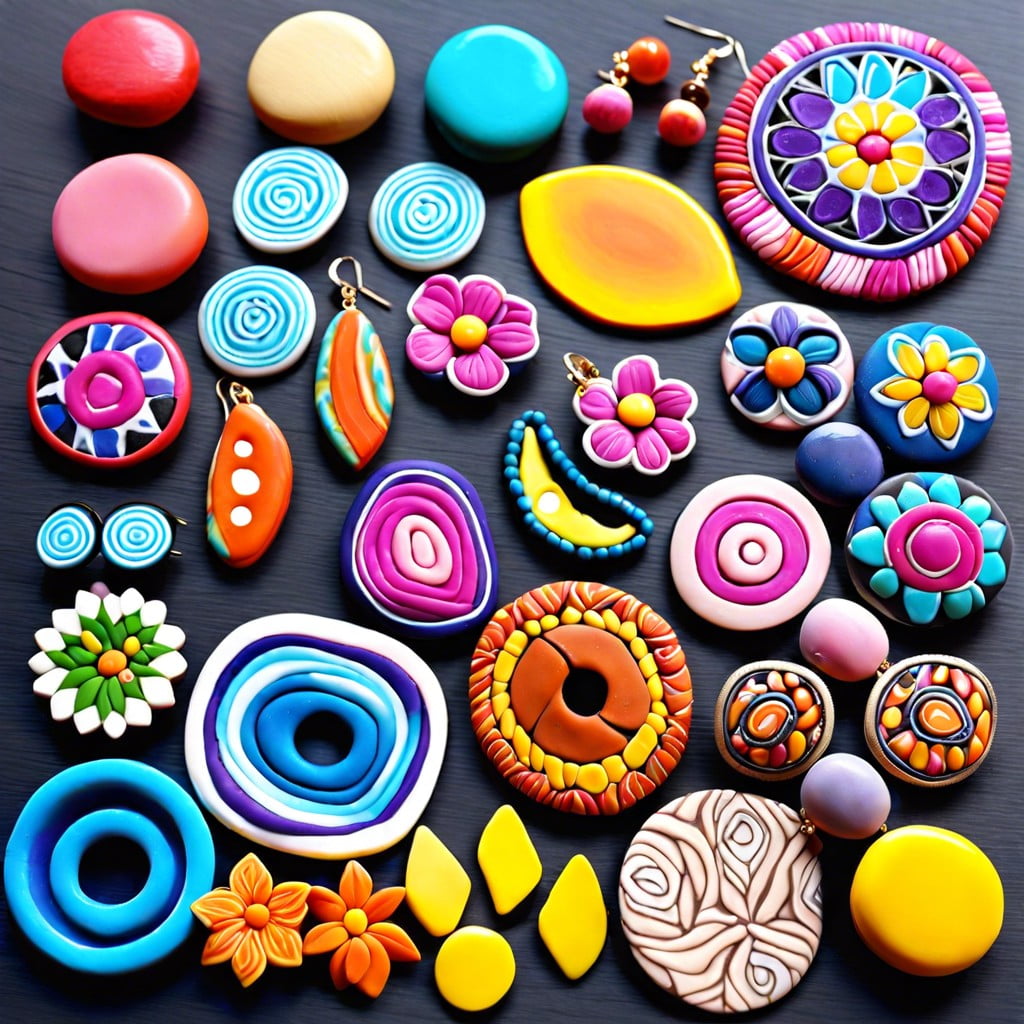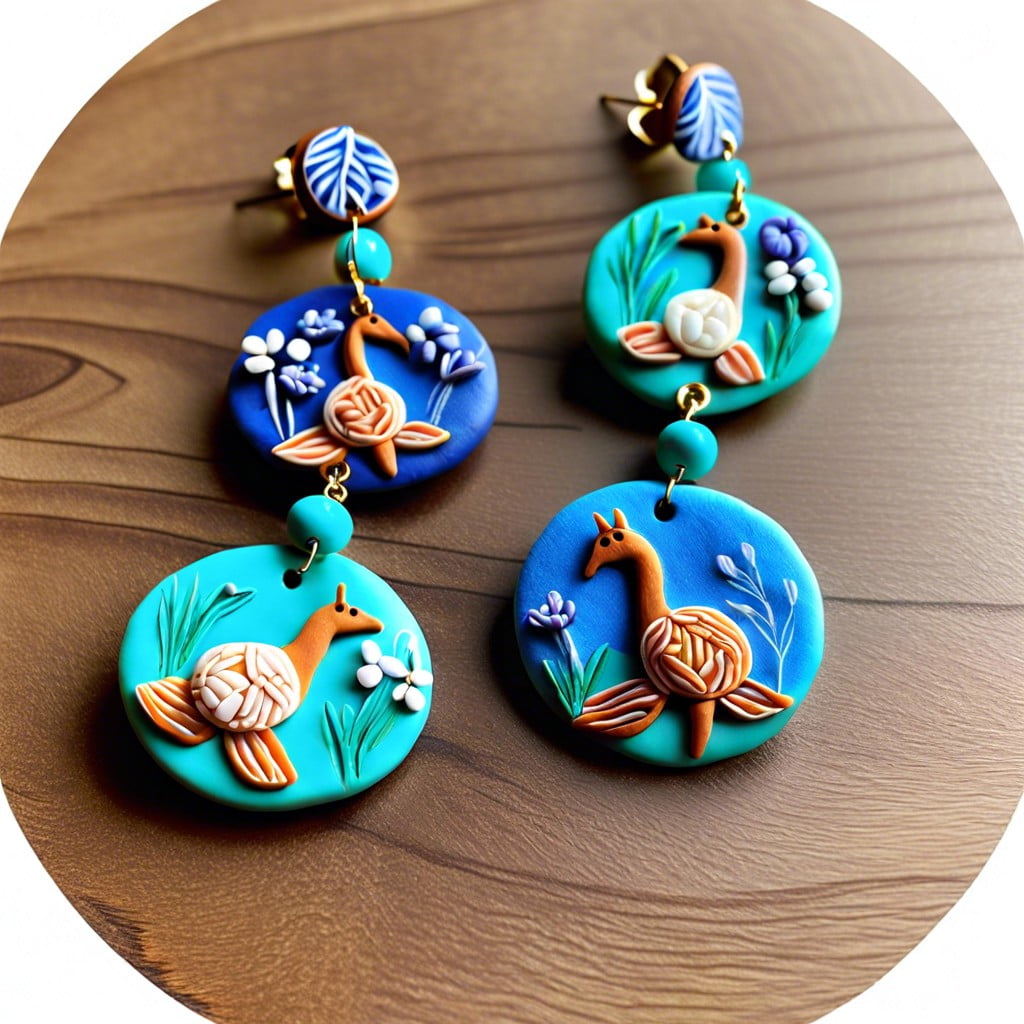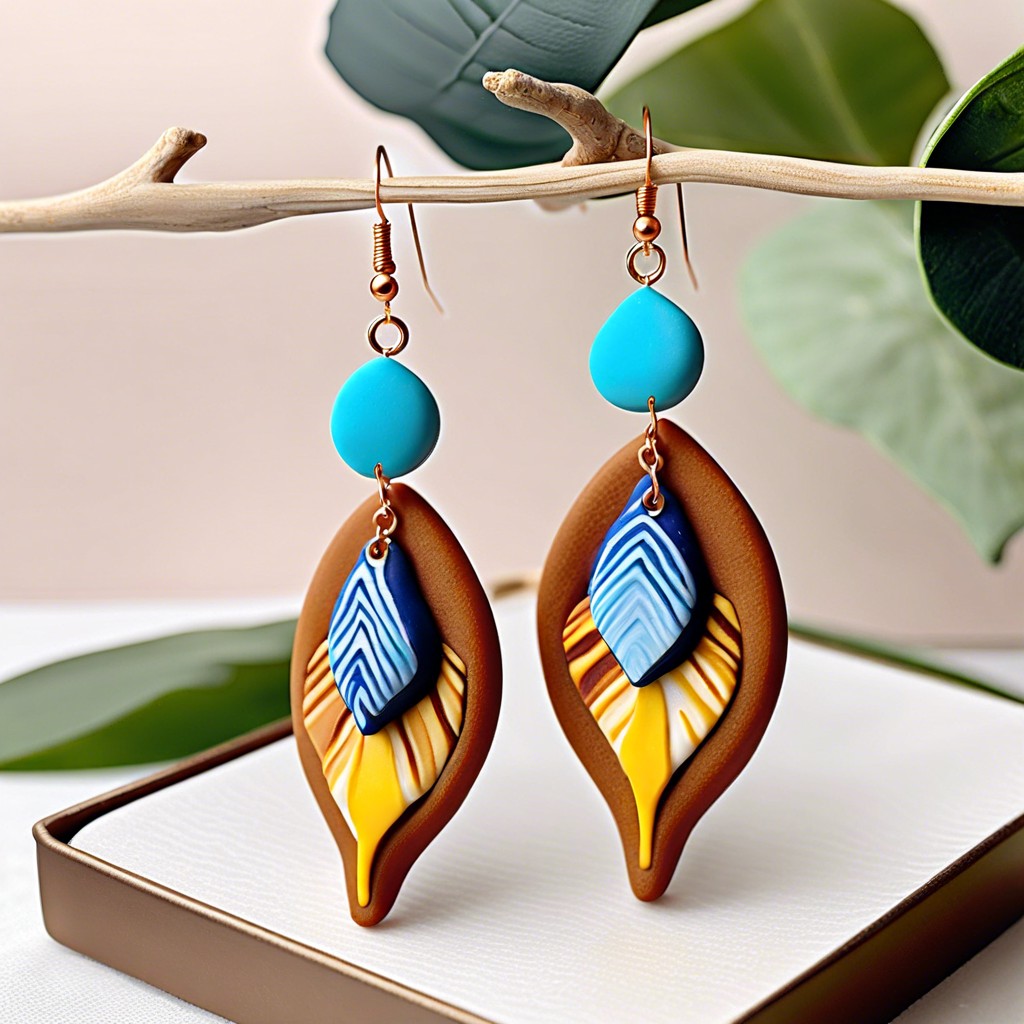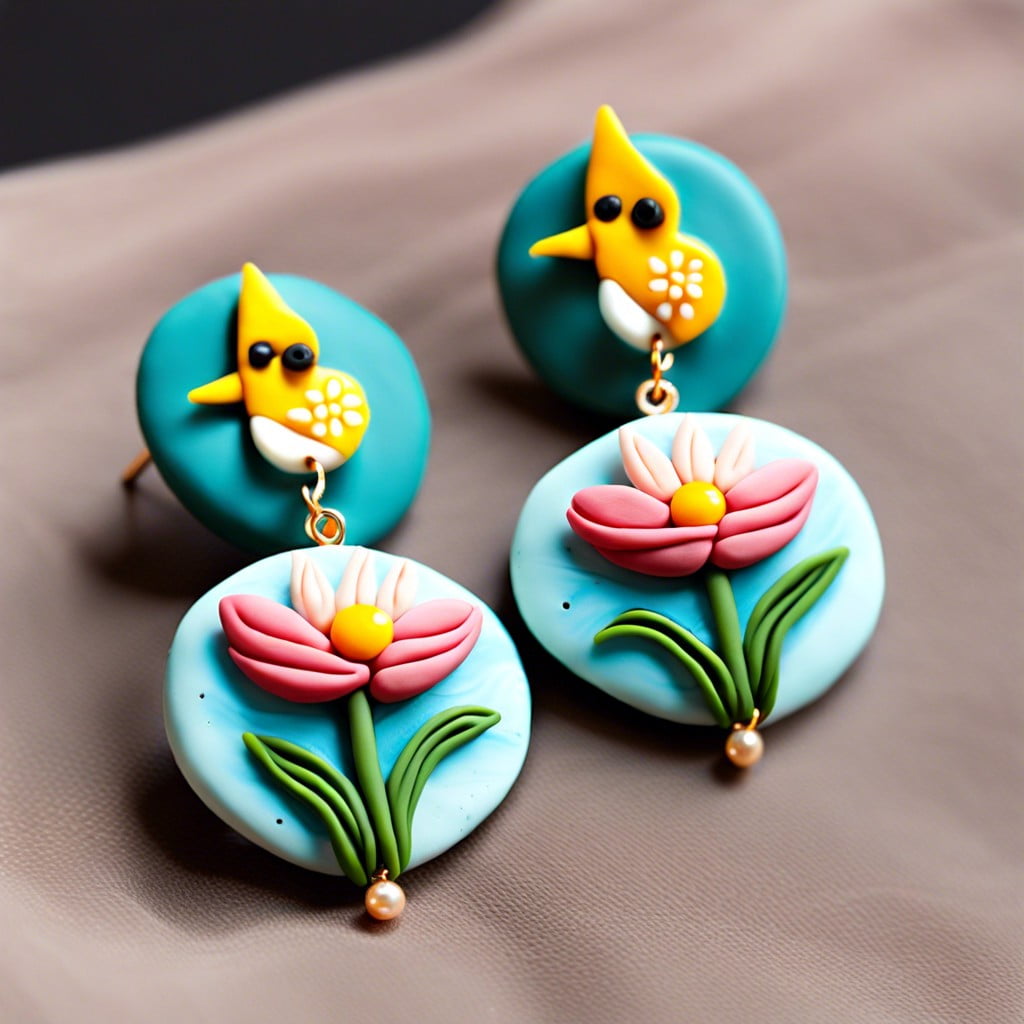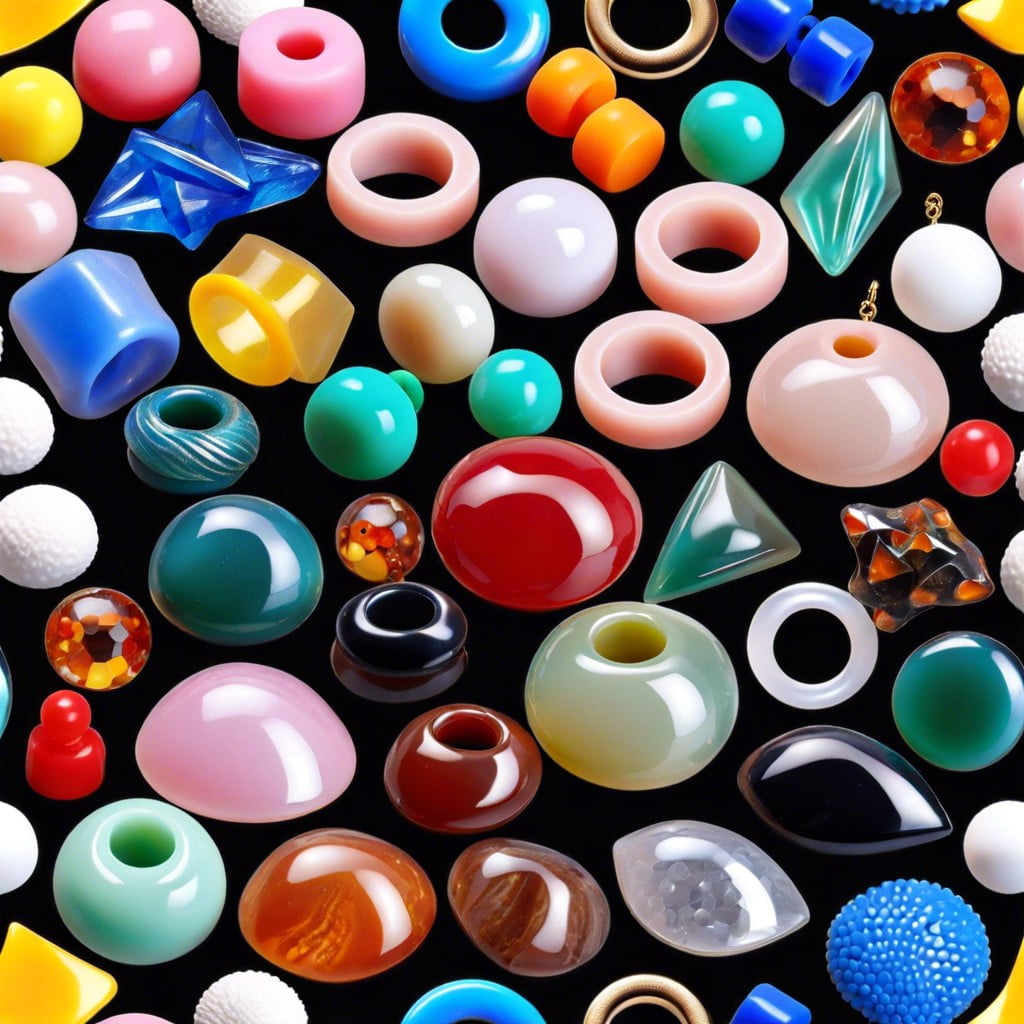This how-to guide will equip you with simple steps to create stunning polymer clay jewelry from scratch.
Key takeaways:
- Polymer clay is a versatile material for making jewelry.
- Essential tools for working with polymer clay.
- Steps to create polymer clay jewelry.
- Care and maintenance tips for polymer clay jewelry.
- Tips and tricks for selling polymer clay earrings.
What You Will Learn
Understanding Polymer Clay
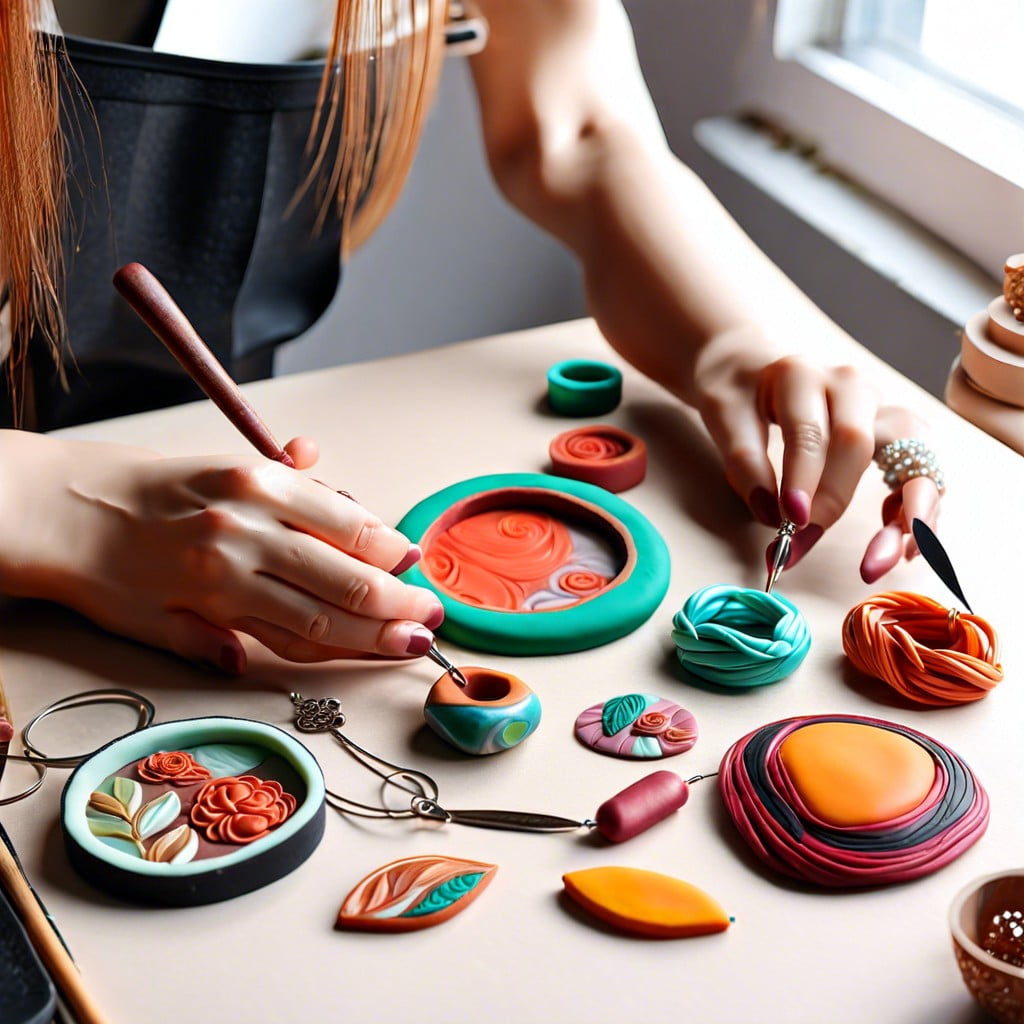
Polymer clay is a versatile, synthetic modeling material. It is soft and pliable, which hardens when baked in a home oven. It comes in a wide variety of colors, and you can mix them to create custom hues. The clay can also be texturized, stamped, or layered to produce unique effects.
Due to its durability after curing, polymer clay is ideal for crafting intricate and long-lasting jewelry items such as beads, pendants, and earrings. It’s easy to work with, making it accessible for both beginners and experienced crafters. Additionally, polymer clay does not shrink or change color upon curing, ensuring your finished piece remains true to your original design.
Essential Tools for Polymer Clay Jewelry
Before you start crafting polymer clay jewelry, gathering the right tools will make the process smoother and more enjoyable. Here’s what you’ll need:
- Rolling Tool: A rolling pin or a pasta machine ensures uniform thickness for your clay slabs.
- Blades: Tissue blades or craft knives cut clay cleanly without distortion.
- Shaping Tools: A variety of items can be used for this purpose, including toothpicks, needles, and specialized rubber-tipped tools, which help sculpt and refine details.
- Baking Surface: A ceramic tile or a dedicated oven-proof glass dish provides a flat surface for baking your pieces without leaving shiny spots.
- Oven: A home oven or a toaster oven with an accurate temperature setting can be used to cure the clay properly.
- Sanding Materials: Wet/dry sandpaper or a sanding sponge smooths edges and surfaces for a professional finish.
- Finishing Glaze: A glaze designed for polymer clay adds shine and protects your finished piece.
These tools will not only assist in starting your polymer clay jewelry projects but will also ensure each piece is crafted with precision and care.
Steps to Create Polymer Clay Jewelry
Select your colors and condition the clay by kneading it until it’s supple and easy to shape. This makes the material more malleable and less likely to crack during the crafting process.
Design your piece, factoring in the size and thickness to ensure even baking. For earrings, consider the weight, as heavier pieces can be uncomfortable to wear.
Roll out the clay to an even thickness using a rolling tool or pasta machine. Use cookie cutters or a blade to cut out desired shapes accurately.
Add texture or patterns to your piece using stamps, textured materials, or carving tools for a personalized touch.
Use a needle or poking tool to create holes for attaching jump rings or earring hooks, making sure the holes are cleanly pierced and well-positioned for hanging.
Cure the clay by baking it in an oven according to the manufacturer’s instructions. Use an oven thermometer to ensure the temperature is accurate for optimal results.
After baking, let your pieces cool completely before handling to avoid warping or fingerprints.
Finish your jewelry by sanding any rough edges with fine-grit sandpaper for a professional appearance.
Assemble your jewelry by attaching the baked clay pieces to earring findings, such as hooks, posts, or hoops, using jump rings or strong adhesive.
Apply a sealant, if desired, to enhance durability and add a glossy or matte finish, giving your creation a polished look.
Care and Maintenance of Polymer Clay Jewelry
To ensure your polymer clay jewelry retains its beauty, a few simple care steps are key:
- Keep it clean: Use a damp cloth to gently wipe off any dirt. For more persistent grime, a bit of mild soap helps, but avoid harsh chemicals.
- Store properly: Place your jewelry in a cool, dry spot. Container storage prevents scratches and dust build-up.
- Avoid heat and sunlight: Extended exposure to direct sunlight or high temperatures can cause warping and color fading.
- Handle with care: Even though polymer clay is durable, it can break under stress. So, treat your pieces gently.
- Remove before water activities: Take off your jewelry before swimming or showering to prevent water damage.
- Apply make-up first: Perfumes and sprays can degrade the finish, so adorn yourself after using such products.
Selling Polymer Clay Earrings: Tips and Tricks
Success in selling polymer clay earrings hinges on a few strategic approaches:
1. Photography: High-quality images that showcase your earrings’ unique designs and colors are crucial. Ensure good lighting and clear, detailed photos to attract potential buyers online.
2. Branding: Develop a recognizable brand identity, including a logo, packaging, and a cohesive style. This helps create a professional appearance and encourages brand loyalty.
3. Pricing: Set competitive prices by considering the cost of materials, time spent, and what the market will bear. Don’t undervalue your work; account for the artistry involved.
4. Online Presence: Utilize social media platforms and online marketplaces to reach a wider audience. Regular posting and engagement with followers can drive interest and sales.
5. Customer Service: Provide clear communication and a pleasant shopping experience. This includes easy transaction processes, prompt responses to inquiries, and reliable shipping practices.
6. Networking: Attend craft fairs, join local art guilds, and participate in community events to showcase your earrings. Face-to-face interactions can build a loyal customer base.
7. Feedback: Listen to customer reviews and adapt where necessary. Positive reviews can be a powerful marketing tool, so encourage satisfied customers to share their experiences.
By implementing these tips, you can improve the visibility and appeal of your polymer clay earrings, ultimately driving sales and growth for your jewelry business.
FAQ
Is polymer clay good for jewelry?
Yes, polymer clay is excellent for jewelry due to its high durability, smooth texture, and ability to retain fine details over a prolonged period.
How long does polymer clay jewelry last?
Polymer clay jewelry can last indefinitely, potentially ranging from a few years to several decades, provided it is not exposed to high temperatures or direct sunlight.
Can you make jewelry out of polymer clay?
Yes, you can indeed make jewelry out of polymer clay using various brands including Sculpey Premo, Soufflé, Fimo Soft, Cernit, and Pardo.
Does polymer clay jewelry break easily?
Polymer clay jewelry does not break easily if properly baked as it should become bendable, ensuring its durability.
How is polymer clay hardened for jewelry application?
Polymer clay is hardened by baking it in an oven at a specified temperature, typically between 265 and 275 degrees Fahrenheit, for approximately 15-30 minutes per 1/4 inch of thickness.
How can one maintain polymer clay jewelry for longevity?
To maintain polymer clay jewelry for longevity, avoid exposing it to direct sunlight, water, and harsh chemicals, and store it in a dry, cool place when not in use.
Does exposure to elements like water and sun affect polymer clay jewelry?
Yes, exposure to elements like water and sun can cause polymer clay jewelry to fade, discolor, or warp over time.
Polymers, as versatile, durable and lightweight materials, are used in construction for various applications like insulation, coatings, adhesives, sealants, and structural components.
Related reading:
